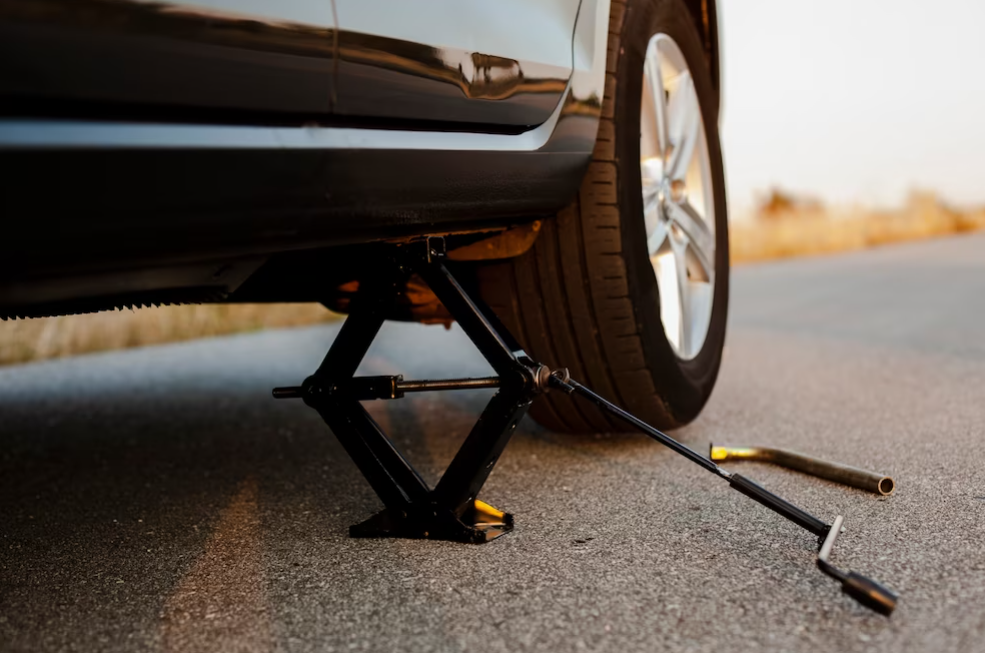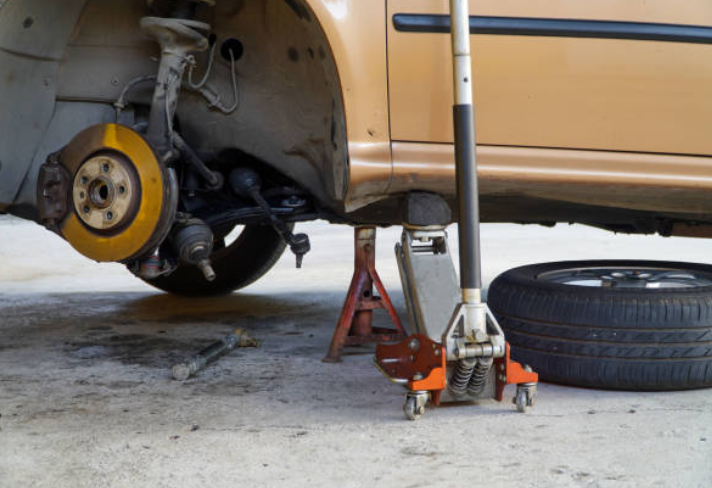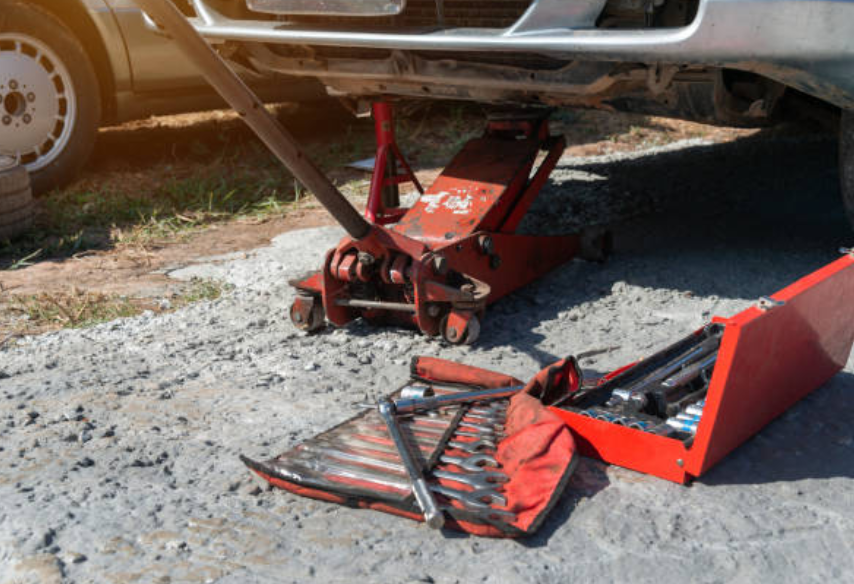How to Use Jack Stands
Vehicle upkeep is a cornerstone of car ownership, whether you're a seasoned mechanic or someone who tackles DIY projects on weekends. This emphasis on safety becomes particularly crucial when you're involved in tasks that entail working underneath your vehicle, such as performing oil changes or inspecting the exhaust system. Among the indispensable safety tools, the jack stand stands out. In this comprehensive guide, we will provide a step-by-step walkthrough on the safe and effective use of jack stands, safeguarding not only your vehicle but, most importantly, your personal safety.

What is a Jack Stand?
A jack stand is a fundamental mechanical device employed to bear the weight of a vehicle when it necessitates lifting from the ground. Typically deployed for tasks requiring access beneath the vehicle, such as maintenance, repairs, or inspections, jack stands assume a pivotal role in automotive safety. They furnish a reliable and steadfast support system, mitigating the risk of the vehicle collapsing or falling while someone is underneath it.
In operation, when the initial lifting of the vehicle is achieved using a hydraulic floor jack or a scissor jack, jack stands are introduced to assume the load-bearing role. This is crucial since the jacks employed for lifting are not intended for prolonged weight support, as they may experience pressure loss or instability over time.

Jack stands are distinguished by their robust construction, featuring tripod or four-legged bases fashioned from heavy-duty materials like steel. These bases provide a broad, level platform for even weight distribution. Furthermore, jack stands often boast adjustable height settings, granting versatility across various vehicle types and tasks. Placed at specific lift points on the vehicle's frame or chassis, as indicated in the owner's manual, jack stands ensure proper weight distribution and steadfast stability.
To bolster safety, they incorporate a locking mechanism that engages once the desired height is reached, forestalling inadvertent lowering due to vibrations or instability. Jack stands find application in a diverse array of automotive undertakings, encompassing oil changes, brake servicing, suspension work, exhaust system inspections, and any endeavor necessitating access to the vehicle's undercarriage.

Step 1: Gather Your Tools and Safety Gear
- A set of appropriate jack stands with the right weight capacity.
- A hydraulic floor jack.
- The vehicle's owner's manual to locate recommended jack points.
- Safety gear, including gloves and safety glasses.
Step 2: Choose a Safe Location
Park your vehicle on a level surface, engage the parking brake, and turn off the engine. Avoid working on uneven or sloped terrain.
Step 3: Identify the Vehicle's Jack Points
Consult your vehicle's owner's manual to locate the manufacturer-recommended jack points. These points are usually along the frame or chassis and are designed to bear the weight of the vehicle safely.
Step 4: Lift the Vehicle with a Hydraulic Jack
Position the hydraulic floor jack under one of the designated jack points and pump the jack handle to lift the vehicle. Raise it high enough to provide ample space for the jack stands to slide underneath.
Step 5: Place the Jack Stands
Carefully position the jack stands under the same designated jack points where the hydraulic jack is supporting the vehicle. Make sure the stands are level and secure on the ground.
Step 6: Lower the Vehicle onto the Jack Stands
Slowly and gently lower the vehicle onto the jack stands by releasing the pressure on the hydraulic jack's handle. Make sure the vehicle's weight is evenly distributed on all the stands.
Step 7: Verify Stability
Give the vehicle a slight shake to ensure it's stable and secure on the jack stands. If it wobbles or feels unstable, reposition the stands and try again.
Step 8: Begin Your Work
With the vehicle safely supported by the jack stands, you can now proceed with your maintenance or repair tasks underneath the vehicle. Ensure you stay safe and avoid sudden movements while working.
Step 9: Final Safety Checks
Before working underneath the vehicle, double-check that:
- The vehicle is securely resting on the jack stands.
- The hydraulic jack is not bearing any weight and is fully lowered.
- The emergency brake is engaged.
- The wheels are chocked or blocked to prevent any rolling.
Step 10: When You're Done
After completing your work, carefully and slowly raise the vehicle using the hydraulic jack. Remove the jack stands one by one, then lower the vehicle to the ground. Store your tools and equipment properly.

Choose the Right Jack Stands: Ensure that you use jack stands with the appropriate weight capacity for your vehicle. Check the owner's manual or look for the Gross Vehicle Weight Rating (GVWR) to determine the correct capacity.
Use Multiple Jack Stands: Ensure you employ a minimum of two jack stands to uphold your vehicle's weight, even if your task focuses on just one side. This additional precaution adds an extra safety measure.
Select a Level Surface: Park your vehicle on a flat, stable surface. Avoid working on inclines or uneven terrain, as this can affect the stability of the vehicle and the jack stands.
Engage the Parking Brake: Before lifting the vehicle, engage the parking brake to prevent it from rolling.
Block the Wheels: Place wheel chocks or blocks in front of and behind the wheels that remain on the ground. This adds an extra layer of safety to prevent the vehicle from moving.
Follow Manufacturer's Instructions: Consult your vehicle's owner's manual for recommended jack points. These points are specifically designed to support the weight of the vehicle safely.
Inspect Jack Stands: Before each use, inspect the jack stands for any signs of damage, such as cracks, rust, or bent parts. If you notice any issues, do not use the stands and replace them.
Use a Hydraulic Jack: A hydraulic floor jack is recommended for lifting your vehicle. Scissor jacks and bottle jacks are not designed for prolonged weight support.
Lift Gradually: When raising the vehicle with the hydraulic jack, lift it gradually and carefully. Watch for any signs of instability, and be prepared to lower it immediately if you encounter problems.
Position Jack Stands Correctly: Place the jack stands under the designated jack points and adjust them to the appropriate height. Ensure that the stands are level and evenly positioned.
Lower the Vehicle Slowly: When lowering the vehicle onto the jack stands, do so gradually and carefully. Make sure the weight is evenly distributed among all the stands.
Verify Stability: Once the vehicle is on the jack stands, give it a gentle shake to ensure it's stable and secure. If it feels wobbly or unstable, reposition the stands.
Use Safety Gear: Wear safety gear, including gloves and safety glasses, to protect yourself while working underneath the vehicle.
Work Safely: Avoid sudden movements while working underneath the vehicle, and never put any body parts under the vehicle while it's elevated.

-
How should I lower my vehicle from jack stands when I'm done working?
Carefully and slowly raise the vehicle using the hydraulic jack, remove the jack stands one by one, and then lower the vehicle to the ground.
-
Can I work alone when using jack stands, or should I have someone assist me?
While it's possible to work alone, having someone available to assist you or call for help in case of an emergency is advisable for added safety.
See another article here: Top 10 Must-Have Car Accessories For Men















